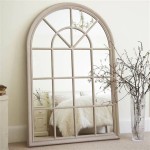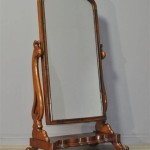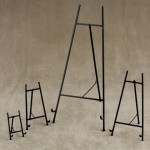```html
Broken Side Car Mirror Repair: A Comprehensive Guide
The side car mirror, a seemingly small component of a motor vehicle, plays a critical role in ensuring driver safety. It provides visibility of the adjacent lanes and blind spots, allowing drivers to make informed decisions during lane changes, merging, and parking maneuvers. Damage to this mirror, whether due to collision, vandalism, or environmental factors, compromises this vital function and necessitates prompt repair or replacement. This article will provide a comprehensive overview of diagnosing the damage, exploring repair options, outlining the replacement process, and highlighting preventive measures to minimize future damage.
Diagnosing the Extent of the Damage
Before initiating any repair or replacement, a thorough assessment of the damage is paramount. Damage to a side car mirror can manifest in several forms, each requiring a specific approach. These include:
Cracked or Shattered Mirror Glass: This is perhaps the most common type of side car mirror damage. Cracks can range from hairline fractures to complete disintegration of the glass. Even minor cracks can distort the reflected image, impairing visibility. Shattered glass poses a safety hazard due to the risk of cuts and abrasions. The severity of the crack will determine whether a simple repair is feasible or if a complete mirror replacement is required. If the crack is small and doesn't significantly obscure visibility, a repair kit might suffice. However, extensive shattering necessitates a replacement.
Damaged Mirror Housing: The housing, typically constructed from plastic or composite materials, protects the mirror glass and the internal mechanisms, such as the adjustment motor. Damage to the housing can range from scratches and dents to cracks and complete breakage. Minor scratches might be cosmetically unappealing but don't compromise functionality. However, significant cracks or breakage can expose the mirror glass to further damage and impair the mirror's stability. If the housing is severely damaged, it often warrants replacement of the entire mirror assembly.
Malfunctioning Adjustment Mechanism: Many modern vehicles are equipped with electronically adjustable side car mirrors. If the adjustment mechanism is malfunctioning, the driver may be unable to properly position the mirror for optimal visibility. This can be caused by a faulty motor, damaged wiring, or a malfunctioning control switch. Diagnosis involves testing the electrical components and inspecting the internal mechanisms for damage. A faulty motor or wiring harness typically requires replacement. In some cases, the control switch itself may be the culprit and need to be replaced.
Detached Mirror Assembly: In some instances, the entire side car mirror assembly may become detached from the vehicle. This can occur due to a forceful impact or corrosion of the mounting hardware. Reattaching the mirror requires inspecting the mounting points for damage and securing the assembly with appropriate fasteners. If the mounting points are damaged, they may need to be repaired or reinforced before reattaching the mirror.
Repairing Minor Damage: DIY Options
For minor damage, such as small cracks in the mirror glass or superficial scratches on the housing, DIY repair options may be viable alternatives to complete replacement. These options can save time and money, provided the damage is not extensive and the individual possesses the necessary skills and tools.
Mirror Repair Kits: These kits typically contain a resin adhesive that is injected into the crack to bond the glass and restore its integrity. The resin is often UV-activated and hardens when exposed to sunlight or a UV lamp. The process involves cleaning the cracked area, applying the resin, and allowing it to cure. While these kits can effectively repair small cracks, they are not suitable for extensive shattering or large cracks. The effectiveness of the repair depends on the quality of the resin and the skill of the applicator.
Housing Repair: Minor scratches and scuffs on the mirror housing can often be buffed out using a polishing compound designed for plastic or painted surfaces. Deeper scratches may require filling with a plastic filler and then sanding and painting to match the original color. This requires careful color matching and application techniques to achieve a seamless finish. For cracked housings, plastic welding or epoxy adhesives can be used to bond the broken pieces together. However, this repair is often less durable than replacing the housing and may not be suitable for areas that are subject to stress or impact.
Important Considerations for DIY Repair: Before attempting any DIY repair, it is essential to disconnect the vehicle's battery to prevent electrical shock. Safety glasses and gloves should be worn to protect the eyes and skin from debris and chemicals. The repair area should be thoroughly cleaned and prepped to ensure proper adhesion of the repair materials. If unsure about any aspect of the repair process, it is advisable to consult a professional auto body repair technician.
Replacing the Side Car Mirror: A Step-by-Step Guide
When the damage to the side car mirror is extensive, or when DIY repair is not feasible, replacement becomes the necessary course of action. Replacing a side car mirror is a relatively straightforward process that can be performed by individuals with basic mechanical skills and tools. However, it is crucial to follow proper procedures to ensure a safe and effective replacement.
Gathering the Necessary Tools and Materials: Before starting the replacement process, gather the necessary tools and materials. These typically include a new side car mirror assembly (matching the vehicle's make, model, and year), a screwdriver set (including both flathead and Phillips head screwdrivers), a socket set, a panel removal tool, a wire cutter, electrical tape, and safety glasses.
Disconnecting the Electrical Connections: If the side car mirror is electrically adjustable or heated, it will have electrical connections that need to be disconnected. Locate the wiring harness inside the door panel and carefully disconnect the connectors. Use a wire cutter to cut any zip ties or tape that secure the wiring harness. It is important to note the location and orientation of each connector to ensure proper reconnection during reassembly.
Removing the Old Mirror Assembly: The method for removing the old mirror assembly varies depending on the vehicle's make and model. In some cases, the mirror is attached to the door with screws that are accessible from the outside. In other cases, the mirror is attached from the inside of the door panel. Use a panel removal tool to carefully pry off the door panel and expose the mounting screws. Remove the screws and detach the old mirror assembly.
Installing the New Mirror Assembly: Position the new mirror assembly onto the door and align the mounting holes. Secure the assembly with the screws, tightening them to the manufacturer's specified torque. If the mirror is electrically adjustable or heated, reconnect the wiring harness, ensuring that the connectors are properly seated. Secure the wiring harness with zip ties or tape to prevent it from interfering with the door's moving parts.
Reassembling the Door Panel: Reattach the door panel, ensuring that all clips and fasteners are properly aligned. Press firmly on the panel to secure it in place. Test the operation of the new mirror, including the adjustment mechanism and any other features, such as heated glass or turn signal indicators.
Preventive Measures to Minimize Future Damage
Taking proactive steps to protect the side car mirrors can significantly reduce the risk of damage and extend their lifespan. These measures include:
Parking Considerations: When parking the vehicle, choose locations that minimize the risk of impact from passing vehicles or pedestrians. Avoid parking in narrow spaces or areas with high traffic density. If possible, fold the side car mirrors inwards when parking to protect them from being struck.
Protective Covers: Consider using protective covers for the side car mirrors, especially when parking outdoors for extended periods. These covers can shield the mirrors from the elements, such as sun, rain, and snow, as well as from potential impacts.
Awareness and Vigilance: Be aware of the surroundings when driving, especially in tight spaces or areas with limited visibility. Avoid making sudden lane changes or maneuvers that could increase the risk of collision with other vehicles or objects. Maintain a safe following distance and use the side car mirrors frequently to monitor traffic conditions.
Regular Maintenance: Inspect the side car mirrors regularly for signs of damage, such as cracks, scratches, or loose mounting hardware. Address any issues promptly to prevent them from escalating and potentially leading to more extensive damage. Keep the mirror glass clean and free from debris to ensure optimal visibility.
```
Automotive Maintenance 101 Replacing Side View Mirrors

Someone Broke My Car Mirror Here S What I Did

How To Prevent Side View Mirror Damage Auto Glass Express Windshield Replacement Repair

Do You Need Vehicle Mirror Damage Repair Glasper

Replace A Broken Side View Mirror Diy Family Handyman

Basic Work Side Mirror Replacement Haynes Manuals

Do I Need To Entirely Replace A Ed Mirror Yourmechanic Advice

Close Up Of Broken Side View Car Mirror With Repair By Plastic Tape Stock Foto Adobe

Broken Side Mirror Here S How To Get It Fixed By A Mechanic Quickly In The Garage With Carparts Com

How We Do New Car Side Mirror Glass Replacement In 20 Minutes








